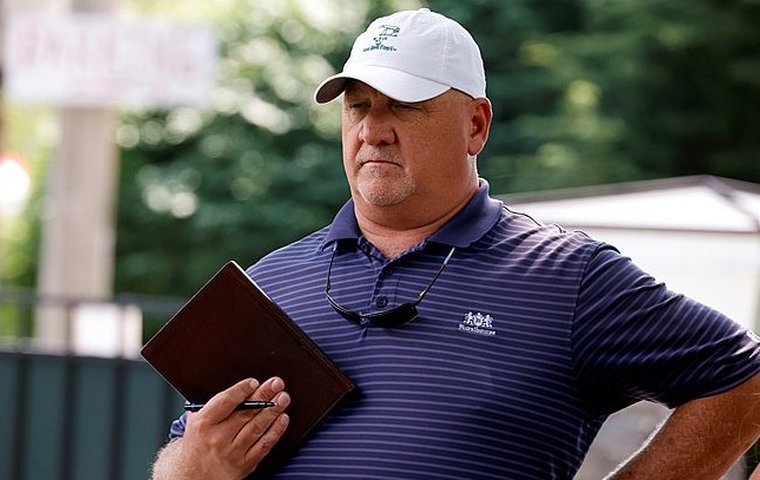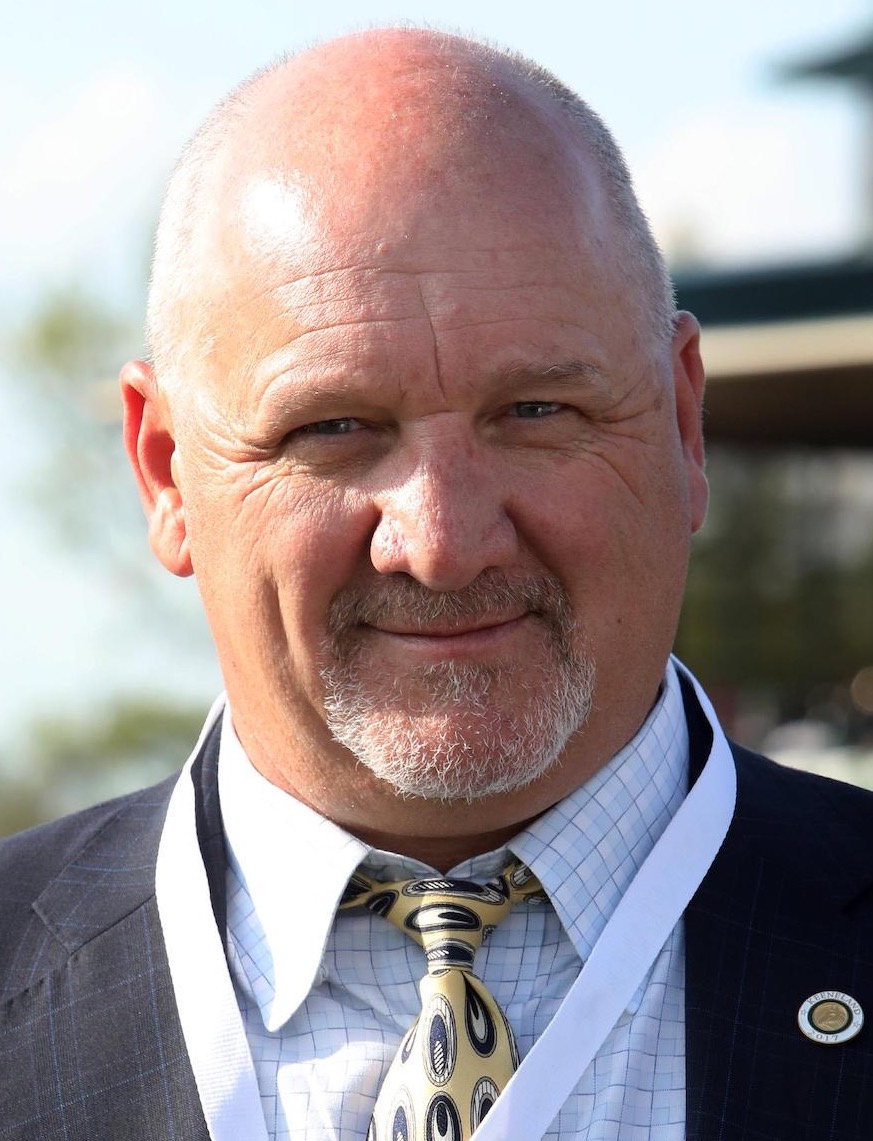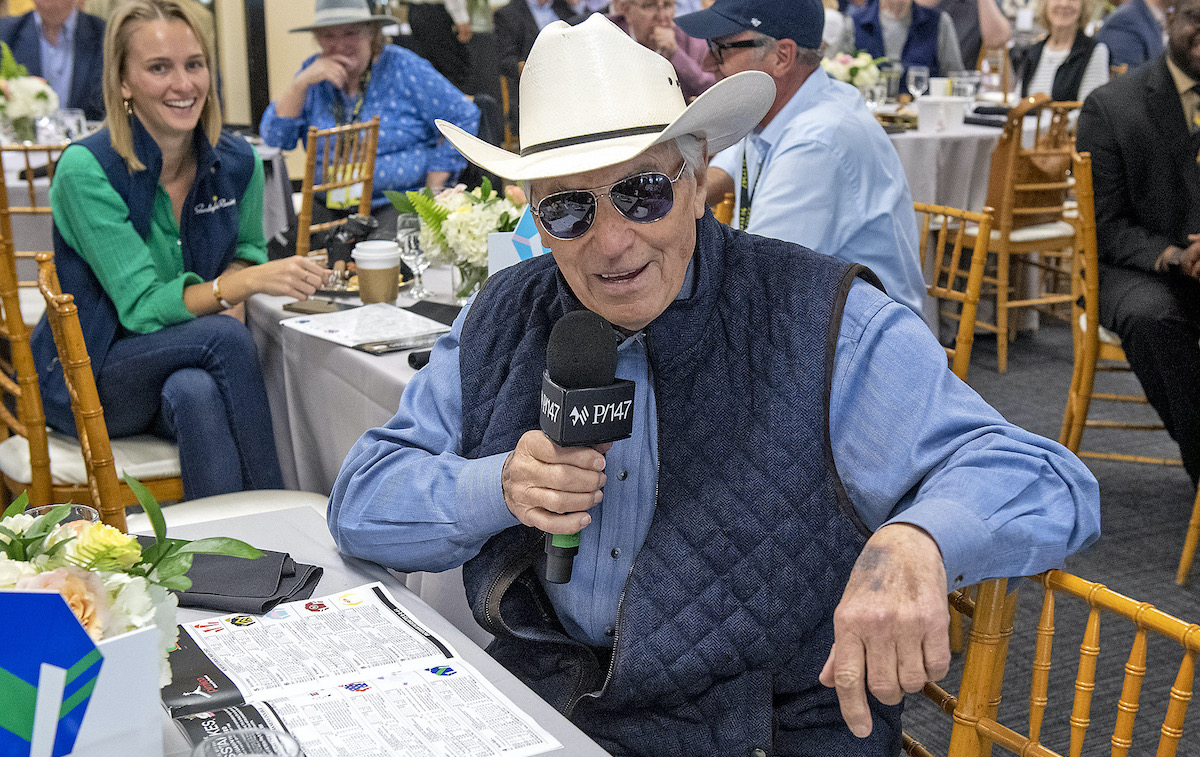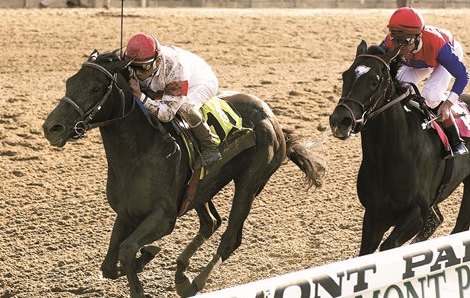
Our questions are answered by the Classic-winning trainer who recently sent out the 2,000th winner of his career
 Leading trainer Kenny McPeek reached his latest career milestone when three-year-old debutante Winnable became his 2,000th winner at Turfway Park in February.
Leading trainer Kenny McPeek reached his latest career milestone when three-year-old debutante Winnable became his 2,000th winner at Turfway Park in February.
“It’s a significant accomplishment,” he says. “I don’t really keep count, I probably pay more attention to the stakes winners. But I guess it’s a body of work and I think it’s quite likely that we will make 3,000 without much trouble, as long as I stay healthy and people continue to give me the opportunity.”
McPeek, 61, started laying the foundations of his body of work in the 1980s, training his first winner at River Downs, Ohio, in 1985. He trained his first graded stakes winner in 1994 and the following year saddled $20,000 buy Tejano Run to finish runner-up in the Kentucky Derby.
In 2002 Harlan’s Holiday became the first of many G1 winners who also number Take Charge Lady plus Sarava and Swiss Skydiver, respective winners of the Belmont (2002) and Preakness (2020). In his role as bloodstock agent, he famously bought Curlin, destined to become a two-time Horse of the Year, for just $57,000 as a yearling.
Which racing figure past or present do you most admire?
 Although they were from a different era, I have read a lot about Federico Tesio and I have always regarded Vincent O’Brien as quite a genius, not only for training horses but selecting horses.
Although they were from a different era, I have read a lot about Federico Tesio and I have always regarded Vincent O’Brien as quite a genius, not only for training horses but selecting horses.
Then there is Wayne Lukas (right). He’s a friend of mine but his career has influenced a lot of horsemen of my generation. Another I always admired was John Nerud. They are all people that changed the game.
Which is your favorite venue, and race, anywhere in the world?
Keeneland is my favorite racetrack and my favorite race is probably the Alcibiades at Keeneland. I’ve won the Alcibiades five times and I think I have been second nine times. Keeneland is home for me, having been raised in Lexington. I’ve been going there since I was a boy. Every spring and fall is a bit of a reunion when you see so many local people. It’s high-level racing too and a thrill to win there.
Who is your favorite racehorse and why?
 There are so many of them but I would probably go for Deputy Minister.
There are so many of them but I would probably go for Deputy Minister.
He is a horse that has been an influence on a lot of horses that I have been associated with. The first really good filly that I trained was Take Charge Lady. She was by a son of Deputy Minister.
Then I trained a Belmont winner Sarava who was out of a Deputy Minister mare.
I bought Golden Ticket, who was out of a Deputy Minister mare, and then I bought Curlin, who was out of a Deputy Minister mare. He is the sire of Awesome Again, one of whose sons is Ghostzapper. He has had such an impact.
What is your fondest memory in racing?
My Preakness Stakes win with Swiss Skydiver. She looked Authentic eye to eye and beat him to the wire at Pimlico. That was during Covid but I was there for the victory. There was no crowd but it was well watched. It was one of the more thrilling wins and to be on the right side of the photo-finish was nice.
She was an amazing filly but just how that whole year unfolded because of the pandemic and the fact she was even nominated was kind of a stretch. The programme was unpredictable, racing was shifting and they were ad libbing a lot of it.
If you could change one thing in racing, what would it be?
I would make it easier for people to watch racing. It’s one of the reasons we created the app Horses Now. The sport needs to make it possible for fans young and old to watch the sport worldwide.
The industry needs to focus on making the media rights and access to live races and replays simpler. Holding them close to the vest is keeping the sport from growing. In this day and age it is relatively simple to stream content and we need to rearrange the delivery system.
You can only watch racing in the US by downloading or registering for a wagering app and you have to be in the correct state, be a certain age limit, and in some cases have to have a credit card.
If you want to watch it on television you can go to FanDuel but they typically show only four to six racetracks an hour. In the US there are around 200 or 300 different racecourses so a lot of tracks aren’t getting any exposure. As a result of their lack of exposure, their fanbase is dwindling.
Ken McPeek was speaking to Jon Lees
• Visit the McPeek Racing website
• View the entire What They're Thinking series
Ramiro Restrepo: I wish US racing had a central body of governance
Steve Asmussen: Curlin brought us to a completely different level
Nick Luck: The fan has become the least important part of the puzzle – which is a crying shame
View the latest TRC Global Rankings for horses / jockeys / trainers / sires


